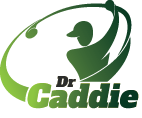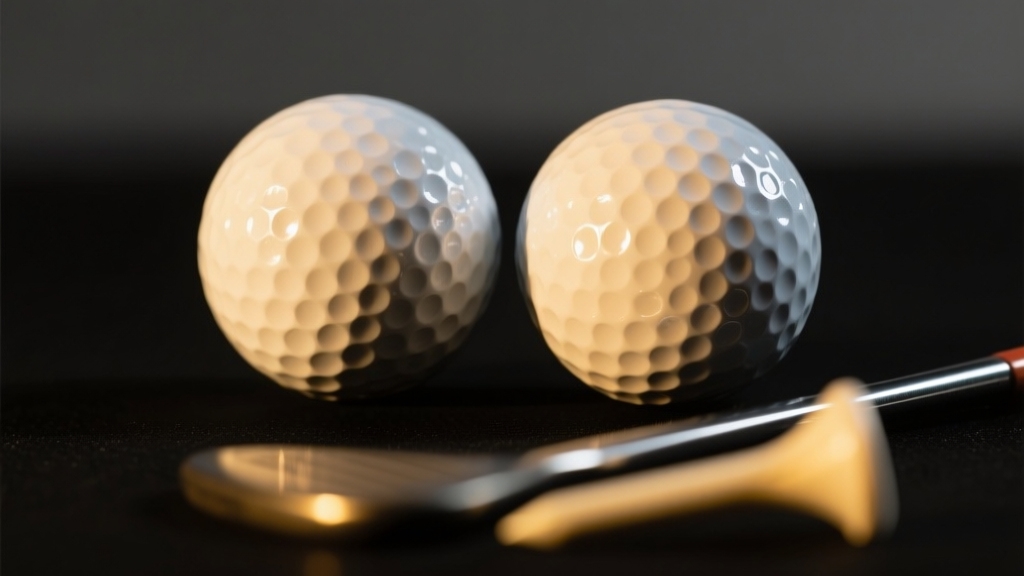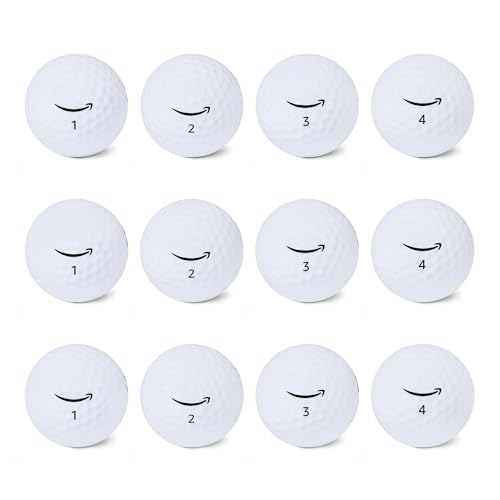Soft golf balls have lower compression, offering a softer feel and higher spin for better control and a higher trajectory. They are ideal if your swing speed is under 85 mph.
Hard balls feature higher compression, producing less spin, a firmer “click,” and a flatter trajectory. These are suited for swing speeds above 100 mph and tougher conditions.
Your choice affects distance, shot consistency, and durability depending on weather and play style. Explore how these factors interact for your ideal golf ball selection.
- Item Package Dimension: 7.480314953L x 5.511811018W x 1.8897637776H inches
- Item Package Weight – 1.4219815899 Pounds
- Item Package Quantity – 1
- Full throttle speed for maximum distance.
- Fast speed on full swing shots from a high speed LSX core; designed for maximum distance
- High ball flight trajectory from a spherically-tiled 350 octahedral dimple design
- Key Takeaways
- Soft vs Hard Golf Ball Performance Breakdown
- Compression and Feel Differences
- Spin and Control Characteristics
- Distance and Trajectory Performance
- Suitability Based on Swing Speed
- Durability and Weather Conditions
- Price and Brand Variations
- Frequently Asked Questions
- Transform Your Game with Better Golf Ball Selection
Key Takeaways
- Soft golf balls have lower compression, offering a softer feel and better spin control, ideal for slower swing speeds under 85 mph.
- Hard golf balls have higher compression, providing a firmer feel and more distance for faster swings above 100 mph.
- Soft balls with urethane covers generate higher spin and a higher, softer trajectory, enhancing greenside stopping power.
- Hard balls with Surlyn covers are more durable, resist cuts and abrasions better, and maintain performance in tough weather.
- Price varies: soft urethane balls cost more ($35–$50/dozen), while hard Surlyn balls are more affordable ($15–$30/dozen) with longer lifespan.
Soft vs Hard Golf Ball Performance Breakdown
| Feature | Soft Golf Balls | Hard Golf Balls |
|---|---|---|
| Compression Rating | 30-70 (Low) | 90-120 (High) |
| Best Swing Speed | Under 85 mph | Over 100 mph |
| Feel at Impact | Softer, responsive sensation | Firmer “click” sound |
| Spin Rate | Higher spin on irons/wedges | Lower spin rates |
| Trajectory | Higher launch with steeper descent | Flatter, penetrating flight |
| Distance Performance | Better for slower swings (7-8 yards gain) | Optimized for faster swings |
| Green Control | Enhanced stopping power | More roll after landing |
| Cover Material | Urethane (premium feel) | Surlyn (maximum durability) |
| Durability | More prone to cuts and scuffs | Excellent wear resistance |
| Weather Performance | Vulnerable in cold conditions | Stable in wind and elements |
| Price Range | $35-$50 per dozen | $15-$30 per dozen |
| Best For | Precision shots, short game control | Distance maximization, tough conditions |
Compression and Feel Differences
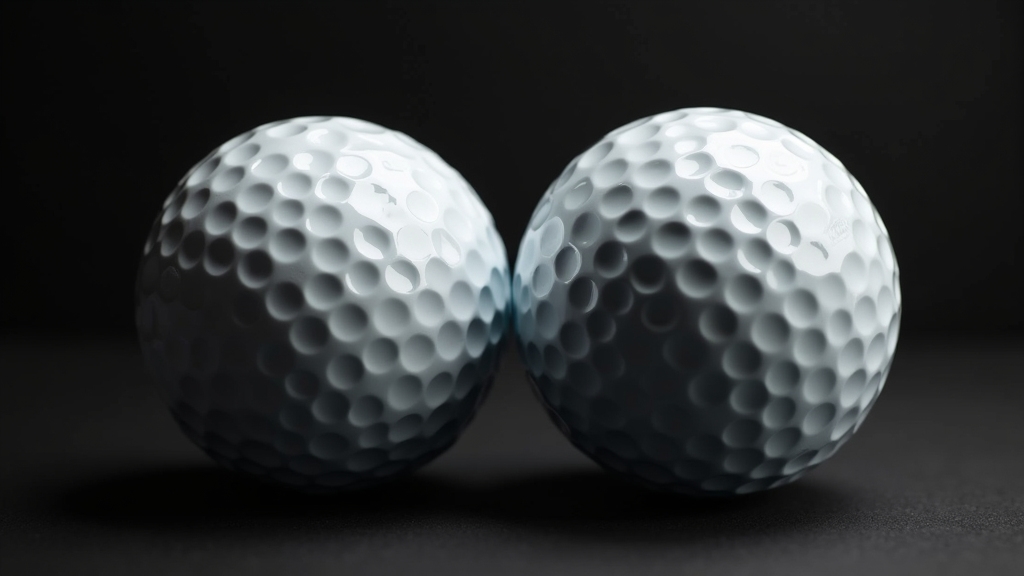
Although golf ball compression ranges from about 30 to 120, understanding how this affects feel and performance is crucial for selecting the right ball for your swing speed. Compression influences not only ball feel but also flight and spin characteristics, which can significantly impact your game.
Low compression balls (30–70) deform more easily upon impact, delivering a softer, more responsive sensation due to their urethane covers and flexible cores. This softness enhances forgiveness and tactile feedback, especially on off-center hits. Additionally, low compression balls typically have hard ionomer covers, which influence spin and durability.
Low compression balls offer a soft, responsive feel that improves forgiveness and feedback on off-center shots.
In contrast, high compression balls (90+) resist deformation with firmer cores and denser construction, producing a solid, “click” feel that suits swing speeds above 100 mph. These hard balls maximize energy transfer but require precise contact.
Your choice should align with your swing speed: softer balls benefit slower swings by minimizing energy loss, while harder balls optimize distance and control for faster swings through reduced compression and increased kinetic energy retention. Matching compression to your swing speed also helps stabilize launch conditions and improve overall shot consistency.
Spin and Control Characteristics
When you select a golf ball, understanding how spin and control characteristics vary between soft and hard balls can substantially impact your game.
Soft golf balls, with their low compression and urethane covers, generate higher spin rates on irons and wedges. This enhances your ability to control trajectory and execute precise shots like draws, fades, chips, and pitches. This increased backspin helps the ball stop quickly on greens, minimizing roll. Additionally, soft balls often provide a softer feel, which many players find improves feedback and shot comfort.
In contrast, hard balls produce lower spin rates, favoring straighter shots with less side spin but less advanced shot manipulation, especially for slower swings. However, at higher swing speeds, hard balls can spin more due to efficient energy transfer.
Matching ball compression to your swing speed optimizes spin control, ensuring you achieve the desired balance between feel, feedback, and shot precision. Soft golf balls are generally recommended for players with slower swing speeds because they compress more easily, enhancing shot control and feel.
Distance and Trajectory Performance
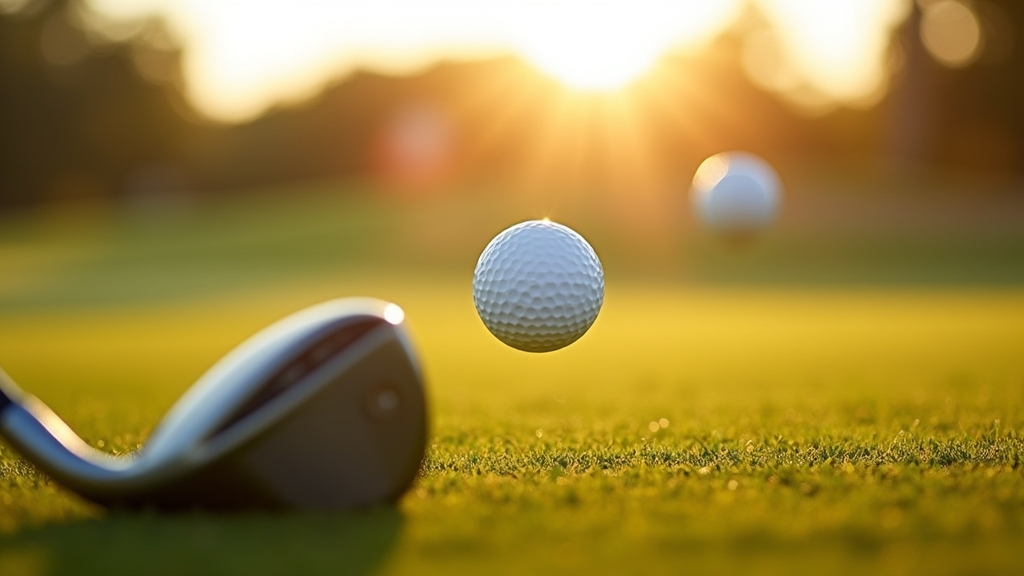
Spin and control characteristics directly influence how a golf ball behaves in flight, but distance and trajectory performance define how far and on what path that ball travels.
Soft golf balls typically launch higher and carry farther due to their lower compression. This especially benefits moderate to slower swing speeds by increasing carry distance up to 7-8 yards. Their steeper descent angle aids stopping power on approach shots. Softer balls also tend to produce less side spin, resulting in straighter shots for players with swing speeds around 90 MPH or less.
Additionally, the compression rating of soft balls influences energy transfer efficiency, enhancing distance for players with slower swings. Conversely, hard balls produce a flatter, more penetrating trajectory with lower launch angles. This favors players with faster swings who maximize energy transfer for greater total distance off the tee.
While hard balls roll more after landing, their reduced spin also limits wind drift. Overall, the distance gap between soft and hard balls narrows at average speeds, making ball selection a matter of matching trajectory needs rather than expecting dramatic yardage differences.
Suitability Based on Swing Speed
To really get the most out of your golf game, it’s essential to match your golf ball compression to your swing speed.
If you’re a slow swinger, say under 85 mph, you’ll want to look for low-compression balls. These balls compress easily, which helps maximize energy transfer and gives you more distance on your shots. Additionally, these softer balls often feature higher spin rates, which contribute to a higher ball flight and improved control. Their multi-layer construction also enhances responsiveness and feel around the greens.
On the flip side, if you swing over 100 mph, high-compression balls are the way to go. They help prevent over-compression, allowing you to maintain better control and spin.
Optimal Compression Matching
Although compression ratings vary widely among golf balls, matching the ball’s compression to your swing speed is essential for maximizing performance.
If you swing above 100–105 mph, choosing a high compression ball (90+) ensures efficient energy transfer, maximizing distance and control by minimizing deformation at impact. This is because high compression balls deform less, allowing more energy to be transferred directly to the ball.
For swing speeds between 85 and 104 mph, a medium compression ball (70–90) balances energy return and feel, optimizing spin and distance without requiring excessive force. This range also supports improved muscular strength, which is important for maintaining consistent swings.
If your swing speed is below 85 mph, low compression balls (below 70) help by deforming more, generating a spring effect that compensates for slower clubhead speed and increases distance.
Using an inappropriate compression rating causes energy loss: over-compression reduces ball speed for fast swings, while under-compression limits distance for slower swings.
Proper compression matching also influences spin rates and ball durability.
Swing Speed Categories
Matching compression to your swing speed sets the foundation for selecting the right golf ball, but understanding the specific swing speed categories helps refine that choice further.
If your swing speed is under 75 mph, opt for soft, low-compression balls that deform easily, maximizing energy transfer and distance. Wearing breathable, moisture-wicking fabrics during play can help maintain comfort and performance.
Between 75 and 90 mph, soft to mid-compression balls balance distance and control, with cover materials influencing spin and feel.
For speeds from 90 to 105 mph, harder balls resist deformation, improving energy transfer, reducing spin, and enhancing control. Knowing your swing speed also aids in selecting the appropriate golf gear to optimize your performance.
Above 105 mph, very high compression balls with multi-layer designs optimize trajectory, stopping power, and durability.
Matching ball compression and cover type to your swing speed and pairing them with appropriate shaft flex ensures ideal performance and consistency in your game.
Durability and Weather Conditions
When you’re picking out a ball, it’s really important to think about how the cover material influences its durability. You know, especially when it’s going to be used on rough surfaces or when it’s taking a beating from repeated hits. Hard golf balls typically have surlyn covers, which provide excellent wear resistance and make them more durable in tough conditions.
And if you’ve ever played in windy weather, you probably noticed how the ball’s performance can really change. It all comes down to how well the ball keeps its shape and spin, right. Using a ball that maintains consistent performance in various conditions can improve your overall game.
Also, it’s helpful to consider the lifespan of the ball and how you plan to use it. Are you playing casually or going all out? This can guide you in choosing between soft and hard balls, especially when you’re looking for something that will hold up well in different weather conditions.
Cover Material Durability
When selecting a golf ball, understanding how cover materials respond to durability challenges and weather conditions is essential for optimizing performance and longevity.
Urethane covers offer superior feel but are more vulnerable to cuts, scuffs, and abrasions, especially in cold weather when urethane hardens and cracks more easily. Proper equipment care can help mitigate damage and extend ball life.
Surlyn (ionomer) covers, engineered for resilience, resist cuts and abrasions effectively, maintaining flexibility in low temperatures and stability in heat and humidity.
While urethane’s softness correlates with shorter lifespan, Surlyn’s hardness provides consistent durability, even under repeated impacts and rough conditions.
Both materials resist water absorption, but wet environments exacerbate urethane scuffing. Additionally, Surlyn’s exceptional durability makes it less prone to cuts and scuffs compared to urethane.
Prolonged UV exposure degrades covers, with Surlyn offering marginally better protection.
Choosing between them depends on balancing performance preferences against expected wear from your typical playing conditions.
Performance in Wind
Although wind conditions challenge all golfers, understanding how soft and hard golf balls perform differently can sharpen your strategy.
Soft balls generate higher spin rates, increasing susceptibility to wind deviation. Meanwhile, hard balls’ lower spin offers more stable flight and better directional control. This stability is vital in breezy conditions where maintaining trajectory and distance is key. Additionally, adjusting your swing mechanics can help manage ball flight in windy weather.
Consider these points for wind performance:
- Hard balls produce a flatter trajectory that penetrates wind, reducing distance loss. Additionally, spin characteristics of hard balls reduce wind drift, improving accuracy in gusty conditions.
- Soft balls launch higher, which can help in light wind but increases wind drift in stronger gusts.
- Hard balls’ firmer construction withstands abrasive wind-driven debris better, preserving performance.
Adjust your ball choice and swing to optimize control and distance under varying wind and weather conditions.
Lifespan and Usage
Since durability directly impacts both performance and cost-effectiveness, understanding the lifespan differences between soft and hard golf balls is essential for optimizing your game.
Soft balls feature urethane covers that offer superior feel but are prone to scuffing and structural wear, especially under aggressive spins or rough conditions. Their lower compression cores (35-65) compress more easily but degrade faster from repeated impacts, reducing consistency. Additionally, soft balls generally have less durable covers, which wear faster especially in abrasive playing conditions. The impact of dimple design on aerodynamics can also be affected as wear diminishes the ball’s flight stability over time.
In contrast, hard golf balls utilize tougher materials and higher compression cores (65-120), preserving core integrity and surface resilience against abrasion and moisture. This robustness prolongs performance, particularly in wet or cold weather, where hard balls repel moisture and maintain flight and spin control.
If you have a high swing speed or frequently play in adverse conditions, hard balls provide longer-lasting durability and consistent playability.
Price and Brand Variations
Several factors influence the price differences between soft and hard golf balls, including materials, construction, and brand positioning.
Materials, construction, and brand positioning all play key roles in the price differences between soft and hard golf balls.
Soft balls, especially multi-layer urethane-covered ones from premium brands like Titleist and Callaway, typically range from $35 to $50 per dozen.
Hard balls, often two-piece surlyn models, usually cost less, around $15 to $30 per dozen.
When choosing, consider:
- Construction: Multi-layer soft balls demand advanced materials, increasing costs.
- Brand: Premium brands target control and feel, while budget brands prioritize durability.
- Compression: Lower compression soft balls cost more, designed for beginners or finesse.
Additionally, players with slower swing speeds benefit more from softer balls due to their lower compression, which enhances distance and control.
You’ll find discounts during retail events, but price often reflects feel and spin benefits more than distance.
Therefore, selecting depends on your performance priorities and budget constraints.
Frequently Asked Questions
How Do Soft and Hard Golf Balls Affect Putting Consistency?
When it comes to putting consistency, soft golf balls give you the upper hand by providing a softer, more responsive feel that lets you control distance and direction with finesse.
They come off the putter face cleaner and truer, improving your stroke feedback.
Hard balls, on the other hand, feel like hitting a rock at slower speeds, offering less sensitivity and unpredictable roll.
This can throw your putting rhythm off balance.
Are There Differences in Ball Visibility or Color Options?
You won’t find inherent visibility differences between soft and hard golf balls since color and contrast dictate visibility, not ball construction.
Both types come in similar color ranges—white, high-optic yellow, orange, neon green, and pink—to enhance tracking.
Choosing bright colors like high-optic yellow improves visibility against grass and sky, regardless of softness or hardness.
Do Soft or Hard Balls Influence Golf Club Wear and Tear?
Soft balls wear your clubs faster. Their urethane covers leave scuffs and residue that cling like paint on your wedges and irons. They compress more, softening impact but accelerating groove erosion and requiring frequent cleaning.
Hard balls, tougher with Surlyn covers, hit harder yet cause less surface abrasion and groove wear. This helps preserve clubface integrity longer. Your choice shapes maintenance schedules, balancing feel against long-term club durability and performance precision.
How Do Storage Conditions Impact Soft Versus Hard Balls?
You’ll find soft balls degrade faster under heat and humidity due to their low-compression cores and softer covers, losing spin and feel quicker.
Hard balls resist environmental stresses better but still suffer from cover wear and core hardening if exposed to extremes.
Both need stable, moderate temperatures and low humidity for ideal preservation.
Avoid UV exposure for all balls; soft urethane covers are especially vulnerable, so store them in opaque, ventilated containers.
Can Ball Type Affect Golf Etiquette or Tournament Rules?
Think of golf etiquette and tournament rules as a well-tuned orchestra; ball type plays no discordant note.
Whether you choose a soft or hard ball, as long as it’s on the conforming list and unaltered, you’re in harmony with regulations.
Ball type doesn’t affect rules or etiquette directly; your focus should be on using the same model throughout the round under the One-Ball Rule.
This ensures fair play and consistency.
Transform Your Game with Better Golf Ball Selection
Choosing between soft and hard golf balls is like selecting the right tool for your swing’s blueprint. Soft balls offer enhanced feel and spin control, ideal for slower swings, while hard balls maximize distance and durability, better suited for faster swings and varied conditions.
Understanding these technical distinctions helps you optimize performance and consistency on the course, ensuring your game’s foundation is as solid as the ball you choose to play with.
- OPTIMIZED PERFORMANCE: 12-pack of low compression golf balls delivers exceptional distance and…
- ENHANCED CONTROL: Advanced core and cover technology provides improved short game control and…
- ALIGNMENT AID: Side stamp alignment feature helps line up putts with confidence for better accuracy…
- Warbird is built for maximum ball speed off every club;The extra-large, high-energy core is highly…
- HEX Aerodynamics reduces drag and promotes increased launch for more speed, better ball flight and…
- The optimized ionomer cover and large core provide feel and greenside control from a 2-piece design
Last update on 2025-11-05 / Affiliate links / Images from Amazon Product Advertising API
